Natural opioids are alkaloids that are directly extracted from the opium poppy plant (Papaver somniferum). The primary natural opioids are known as opiates, which include:
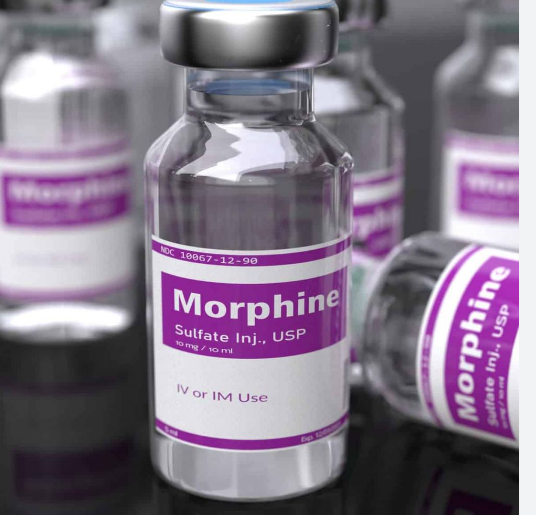
a. Morphine
- Source: Derived directly from the opium poppy.
- Medical Uses: Morphine is one of the most well-known natural opioids and is primarily used for the relief of severe acute and chronic pain. It is also used in palliative care for end-of-life pain management.
- Formulations: Available in oral (tablet, liquid), injectable, and suppository forms.
- Mechanism of Action: Morphine acts on mu-opioid receptors in the brain and spinal cord to provide pain relief and induce sedation.
- Side Effects: Common side effects include drowsiness, constipation, nausea, and respiratory depression at higher doses.
b. Codeine
- Source: Another natural opioid alkaloid derived from the opium poppy. It is less potent than morphine.
- Medical Uses: Codeine is commonly used for mild to moderate pain and as a cough suppressant. It is also combined with other analgesics such as acetaminophen for enhanced pain relief (e.g., Tylenol with Codeine).
- Formulations: Available in oral tablets, liquids, and combination medications.
- Mechanism of Action: Codeine is partially metabolized into morphine in the liver, which contributes to its analgesic effect.
- Side Effects: Drowsiness, nausea, constipation, and the risk of respiratory depression at higher doses.
c. Thebaine
- Source: Derived from the opium poppy. Unlike morphine and codeine, thebaine is not used directly as an analgesic due to its stimulant effects.
- Uses: Thebaine is primarily used as a precursor for the synthesis of various semi-synthetic opioids such as oxycodone, hydrocodone, and naloxone.
- Effects: In its pure form, thebaine can cause convulsions and is toxic at high doses, which is why it is not used therapeutically.
The Abuse of Natural Opioids and Treatment
Abuse of Natural Opioids and Treatment Approaches
Natural opioids, also known as opiates, are directly derived from the opium poppy plant (Papaver somniferum) and include substances such as morphine and codeine. These drugs are effective for pain relief but also have a high potential for abuse due to their euphoric effects. Abuse of natural opioids can lead to physical dependence, addiction, and a range of adverse health effects, including overdose and death.
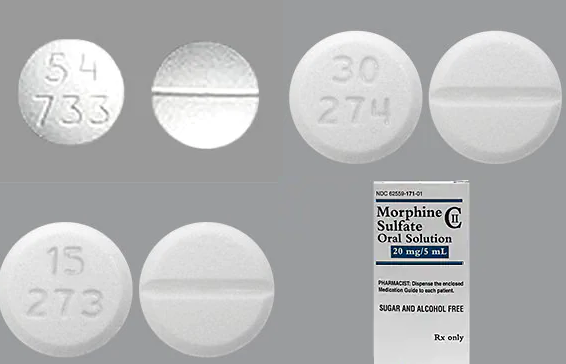
Below is a detailed look into the abuse of natural opioids, the associated risks, and the various treatment approaches for opioid use disorder (OUD).
1. Types of Natural Opioids Commonly Abused
The primary natural opioids that are subject to abuse include:
a. Morphine
- Medical Uses: Morphine is widely used in the medical field to treat severe pain, especially in cases of surgery, trauma, or cancer-related pain.
- Abuse Potential: Morphine is commonly abused because of its potent pain-relieving properties and the euphoria it can induce at high doses.
- Common Forms of Abuse: Morphine can be abused by oral ingestion, crushing and snorting tablets, or injecting the drug (especially in cases where injectable forms are available).
b. Codeine
- Medical Uses: Codeine is used for mild to moderate pain relief and as a cough suppressant.
- Abuse Potential: Codeine has a lower abuse potential compared to morphine but can still be abused, especially when consumed in large quantities or in combination with other drugs such as acetaminophen or cough syrup (e.g., “Purple Drank” or “Lean”).
- Common Forms of Abuse: Codeine is often abused in syrup form by drinking it in large quantities, mixing it with alcohol, or taking it in combination with other substances.
2. Consequences of Natural Opioid Abuse
Abuse of natural opioids can result in serious physical, psychological, and social consequences:
a. Physical Health Risks
- Respiratory Depression: Opioids like morphine and codeine can suppress breathing, which can be fatal, particularly in overdose situations.
- Organ Damage: Long-term opioid use can lead to damage to vital organs, including the liver (especially if codeine is combined with acetaminophen) and kidneys.
- Infectious Diseases: Those who inject opioids are at risk of contracting diseases such as HIV or hepatitis through the use of contaminated needles.
b. Psychological and Behavioral Effects
- Addiction: Repeated use of opioids can lead to opioid use disorder (OUD), characterized by compulsive drug-seeking behavior, inability to control use, and continued use despite negative consequences.
- Mental Health Issues: Opioid abuse is associated with depression, anxiety, and mood swings. Long-term abuse may also contribute to cognitive decline.
c. Overdose and Death
- Overdose from natural opioids is a significant risk, particularly when they are mixed with other substances like alcohol, benzodiazepines, or other opioids. Symptoms of opioid overdose include:
- Extreme drowsiness or unconsciousness
- Pinpoint pupils
- Slow or shallow breathing
- Cold, clammy skin
- Blue or grayish lips and fingertips
3. Treatment Approaches for Natural Opioid Abuse
Effective treatment for opioid use disorder (OUD) includes a combination of medication-assisted treatment (MAT), behavioral therapy, and supportive care. Below are the primary approaches used to treat individuals abusing natural opioids.
a. Medication-Assisted Treatment (MAT)
MAT involves the use of specific medications to alleviate withdrawal symptoms, reduce cravings, and prevent relapse. The following medications are used for treating natural opioid abuse:
i. Methadone
- Mechanism: Methadone is a long-acting opioid agonist that binds to the same receptors as morphine but with a slower onset and longer duration. It helps to reduce cravings and withdrawal symptoms without causing the intense highs associated with opioid abuse.
- Usage: Typically dispensed in specialized methadone clinics, it is used for both detoxification and maintenance therapy.
- Effectiveness: Methadone has been shown to reduce illicit opioid use, improve social functioning, and decrease the risk of overdose.
ii. Buprenorphine
- Mechanism: Buprenorphine is a partial opioid agonist, meaning it activates opioid receptors but to a lesser extent than full agonists like morphine. It provides pain relief and reduces cravings, but with a ceiling effect that lowers the risk of abuse and overdose.
- Usage: Buprenorphine is available as a sublingual tablet or film (Subutex) or in combination with naloxone (Suboxone) to prevent misuse.
- Effectiveness: It is highly effective in treating opioid dependence, reducing cravings, and preventing relapse.
iii. Naltrexone
- Mechanism: Naltrexone is an opioid antagonist that blocks the effects of opioids at the receptor level. It prevents any euphoria if opioids are used, helping to discourage relapse.
- Usage: Naltrexone can be taken orally or as an extended-release injectable (Vivitrol).
- Effectiveness: Naltrexone is effective for relapse prevention but is typically only used after detoxification, as it does not reduce withdrawal symptoms.
iv. Naloxone
- Mechanism: Naloxone is a fast-acting opioid antagonist used to reverse opioid overdoses. It binds to opioid receptors more strongly than natural opioids like morphine and can quickly reverse life-threatening respiratory depression.
- Usage: Naloxone is administered as a nasal spray (Narcan) or by injection during overdose situations.
- Effectiveness: Naloxone is life-saving in overdose situations and is widely available as part of harm-reduction strategies.
b. Behavioral Therapy and Counseling
Behavioral therapies are an essential part of the treatment process and are often combined with MAT to address the psychological aspects of addiction.
i. Cognitive Behavioral Therapy (CBT)
- Focus: CBT helps individuals recognize and change patterns of thinking and behavior that lead to opioid abuse. It also teaches coping skills to manage stress, triggers, and cravings.
- Effectiveness: CBT is highly effective in helping patients maintain long-term recovery by developing healthier thought patterns and behaviors.
ii. Contingency Management
- Focus: This therapy provides rewards for positive behaviors, such as staying abstinent or attending therapy sessions, reinforcing the desire to maintain sobriety.
- Effectiveness: Contingency management can be effective in improving patient engagement and reducing relapse rates.
iii. Motivational Interviewing
- Focus: This therapeutic technique is designed to help individuals increase their motivation to change and engage in treatment. The therapist works to resolve any ambivalence the patient has about quitting opioid use.
- Effectiveness: Motivational interviewing is particularly effective in the early stages of treatment to encourage commitment to recovery.
iv. Group Therapy and Support Groups
- Focus: Group therapy provides a supportive environment where individuals can share their experiences and challenges in recovery. Mutual support groups like Narcotics Anonymous (NA) offer long-term peer support and accountability.
- Effectiveness: Group therapy and peer support are effective in maintaining long-term sobriety and fostering a sense of community.
c. Detoxification and Withdrawal Management
The first step in treating opioid dependence is often medically supervised detoxification, which helps to manage the physical symptoms of withdrawal in a safe and controlled environment.
i. Medically Supervised Detox
- Process: Patients undergo detox in a hospital or specialized detox facility where they receive medical care to alleviate withdrawal symptoms such as muscle aches, nausea, diarrhea, and anxiety.
- Medication: Withdrawal symptoms are often managed with medications like clonidine (to reduce anxiety and agitation) and non-opioid pain relievers.
ii. Tapering
- Process: In some cases, a gradual tapering approach is used, where opioid doses are slowly reduced over time to minimize withdrawal symptoms.
- Effectiveness: Tapering allows the body to adjust to lower levels of opioids, reducing the risk of severe withdrawal symptoms.
d. Long-Term Recovery and Aftercare
Successful treatment for opioid abuse requires ongoing aftercare to prevent relapse and support long-term recovery.
i. Sober Living Homes
- Purpose: These are residential environments where individuals in recovery can live together in a drug-free space. They offer structure, accountability, and support during early recovery.
- Effectiveness: Sober living homes are effective in providing stability and reducing the risk of relapse during the transition back to independent living.
ii. Continued Counseling and Support
- Purpose: After initial treatment, ongoing counseling and participation in support groups (e.g., NA) are essential for long-term recovery.
- Effectiveness: Ongoing therapy helps individuals manage stressors and triggers that could lead to relapse, reinforcing coping strategies learned in treatment.
Conclusion
Natural opioid abuse, particularly of drugs like morphine and codeine, can have devastating health consequences, including addiction, overdose, and death. Effective treatment involves a comprehensive approach that includes medication-assisted treatment (MAT), behavioral therapy, detoxification, and long-term recovery support. By combining these strategies, individuals struggling with opioid use disorder can achieve lasting recovery and improve their quality of life.
Pain Medications, Pain Relief, and Pain Management

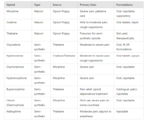

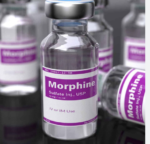
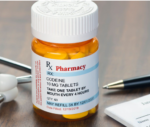

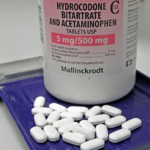
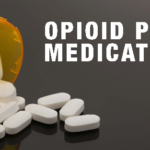
pkbrkq
cr2rbn
e3fyt5
qxneoq